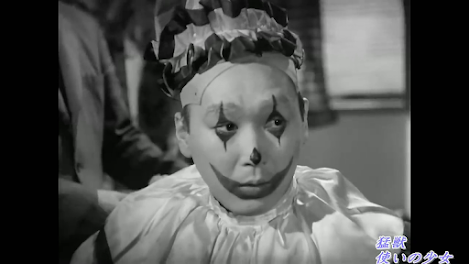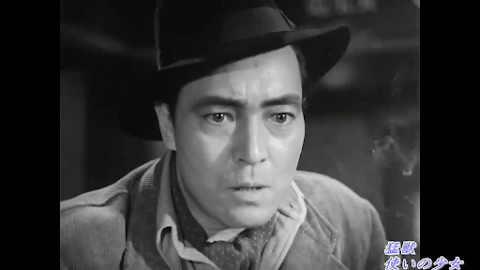Obscure Japanese Film #56
 |
Isuzu Yamada
|
This film adaptation of a Japanese literary classic tells the story of Kitahachi (Shotaro Hanayagi), the son of a famous Noh actor, Genzaburo Onchi (Ichijiro Oya). Kitahachi is angered by stories of 'So-zan' (Masao Murata), a provincial amateur who has been bragging that he can perform Noh songs better than 'those guys in Tokyo.' He decides to pay a visit to So-zan to find out how good he really is. So-zan is a blind masseur turned restaurant owner said to be keeping three concubines, the thought of which Kitahachi finds distasteful and only angers him further. Unimpressed by So-zan's singing, he takes him down a peg or two, humiliating the braggart by beating out the correct rhythm to the song, causing So-zan to falter in his performance and lose face. Kitahachi follows this victory by openly insulting him, then walks out. So-zan sends O-Sode (Isuzu Yamada) – the young woman who had ushered him in to see So-zan and whom Kitahachi takes to be one of the concubines – to go after Kitahachi and bring him back, but he rebuffs her. The following day, he learns that So-zan has committed suicide. When Kitahachi's father hears what has transpired, he is furious and disowns Kitahachi, who is soon reduced to becoming a wandering samisen player. One day, he encounters O-Sode, whom he has by this time learned was actually So-zan's daughter. (This is significant as he would never have been so harsh towards her father had he known this at the time.) She is now working as a geisha but is in danger of losing her job as she's unable to play the shamisen despite having made a great effort to learn the instrument. Stricken by guilt, Kitahachi sees a way of making amends and decides to help her. As she clearly has no talent for the shamisen, he teaches her a Noh dance instead…
 |
| Shotaro Hanayagi |
The Song Lantern was based on a 1910 novella by Kyoka Izumi (1873-1939). Izumi was held in high esteem by a number of more famous Japanese writers, including Yukio Mishima, Junichiro Tanizaki and Yasunari Kawabata, while his work has formed the basis of films by directors such as Kenji Mizoguchi, Masahiro Shinoda and Kon Ichikawa. The original, which has been published in English as ‘A Song by Lantern Light’, is regarded as one of its author’s masterworks. Unravelling in a clever flashback structure which flits between the past and present in a way that is ahead of its time, and containing some nice humour mixed in with the tragedy, it stands up very well indeed. This film version uses a more conventional narrative structure but otherwise remains remarkably faithful for the most part, although the ending is less enigmatic and more upbeat. Another difference is that So-zan reappears as a ghost in the film – though, like the ghost of Banquo in Macbeth, it’s left ambiguous as to whether this is a ‘real’ ghost or, a hallucination brought on by a guilty conscience. Many of Izumi’s stories do feature ghosts, but not ‘A Song by Lantern Light’.
 |
| Masao Murata |
The screenplay was written by Mantaro Kubota (1889-1963), a writer of novels, plays and haiku with four screenplay credits, three of which are for adaptations of Izumi stories. His screenplay for The Song Lantern was apparently finished in 1940, but when production of the film was delayed, it was instead staged at Tokyo’s Meijiza theatre in July of that year with Shotaro Hanayagi (star of the film version) in the lead. Hanayagi (1894-1965), who somewhat resembles Kazuo Hasegawa, was a kabuki actor specialising in female roles who had starred in a stage version of Izumi’s novel Nihonbashi (Bridge of Japan) back in 1915. He only made a handful of films, most notable of which was his leading role for Kenji Mizoguchi in The Story of the Last Chrysanthemums (1939), but he went on to be awarded the title of ‘Living National Treasure’.
 |
Isuzu Yamada
|
Another cast member with an affinity for the work of Kyoka Izumi is Isuzu Yamada, a striking, skilful and versatile actress who will always be remembered for her ‘Lady Macbeth’ in Throne of Blood, but deserves to be remembered for lot more. She had also starred in Mizoguchi’s The Downfall of Osen (1934), and Masahiro Makino’s two-part Onna Keizu (1942), all of which were based on Izumi stories.
13 years into his directorial career at this point, Mikio Naruse was not yet considered one of the grand masters of Japanese cinema, but certainly had an excellent reputation as a maker of intelligent, sensitive, literary dramas. As this film was made during the war years, Naruse would have been working with limited resources and interference from the authorities, so it is to his credit that he managed to avoid making military propaganda and was able to produce such a high quality film under these circumstances. In my opinion, this is one Naruse film which deserves a little more love. Although some lengthy scenes of Noh performance may stretch the patience of some viewers, it has a strong story which draws you in, fine performances and some notably well-shot sequences, such as the ones in which Kitahachi teaches O-Mie the Noh dance in the forest. As far as I can tell, the film is only available in a rather faded VHS transfer – a pity, as it’s certainly worthy of restoration.
The Song Lantern was remade in 1960 by Teinosuke Kinugasa (working from a new script), who cast Raizo Ichikawa and Fujiko Yamamoto in the leads.
The original story can be found in In Light of Shadows: More Gothic Tales by Izumi Kyoka translated by Charles Shiro Inouye (University of Hawaii Press, 2005)

























